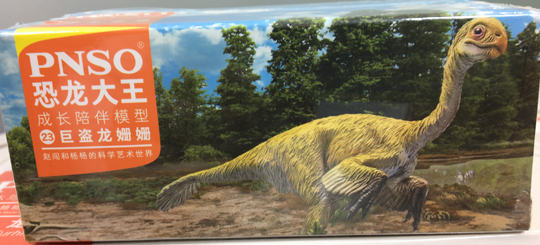Communal Roosting in Dinosaurs
Palaeontologists attending the annual meeting of the Society of Vertebrate Palaeontology (SVP) in Calgary (Canada), were given a presentation by University of Alberta researchers outlining the discovery of a trio of young oviraptorid dinosaurs that may have been preserved sleeping as a group. Oviraptors were very closely related to the dinosaurs that were the direct ancestors of modern birds. Oviraptorids were very bird-like, with feathers and beaks and like most birds, they were probably highly sociable. The discovery of three young dinosaurs which died together in a sleeping posture suggests that some dinosaurs roosted in groups just like many extant animals today.
Roosting Dinosaurs (Fossil Find Indicates that Oviraptorids Roosted Like Some Birds)
Picture credit: Mike Skrepnick
Communal Roosting in Dinosaurs
This fossil find, which first came to the attention of academics in 2006, when it was confiscated from an airport as part of an anti-fossil smuggling operation, provides further evidence to suggest just how closely related to birds some types of dinosaur were. Communal roosting is seen in many species of birds, notable examples being starlings and rooks. Communal roosting is also known amongst primates, bats and butterflies.
Oviraptors and Other Types of Dinosaurs Might Have Used Their Feathers for Display
Picture credit: Everything Dinosaur
The picture above shows the box art on the PNSO Gigantoraptor model.
To view the PNSO range of dinosaurs: PNSO Age of Dinosaurs.
A spokesperson from Everything Dinosaur stated:
“Although care must be taken when attempting to interpret fossils of this nature, the idea that some types of dinosaur roosted communally is certainly plausible. The young dinosaurs preserved in this fossil could have huddled together to keep warm, or have roosted as a group in order to provide some protection against predators.”
Visit the Everything Dinosaur website: Everything Dinosaur.



